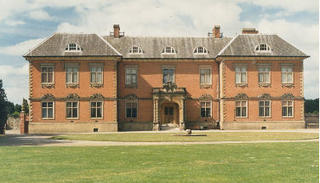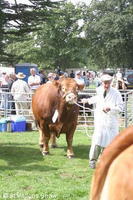
On the death of her father, Sir Morgan ap Maredudd in c1332, Angharad, his only daughter, inherited Tredegar and his other estates. An account of Angharad's great beauty has been passed down through history (she was celebrated as being the mother of Ifor Hael). As a great heiress, a marriage with her should have been seen as very desirable, it is therefore slightly surprising that, aged around 32, she was still unmarried on her father's death. It is very tempting to ponder the reasons for this. After all, as Thomas Wakeman, the Victorian antiquarian pointed out "at a time of day when young ladies of any expectations were married when about 13 or 14 it may excite our curiosity". Was her father, Morgan the Rebel, an obstacle in her path to marriage? There is no evidence either way, but speculation is always fun.
When she DID marry (c1333), it was a very advantageous match. Her husband was Llewelyn ap Ifor, lord of Sancler (St Clears) and Gwynfe, in Carmarthenshire. He was a descendant of Cadifor Fawr, lord of Cilsant, who lived in Dyfed, and died in 1089. Cadifor Fawr's third son, Bledri, received land from the Normans in Gwent. Thus, two ancient Welsh families, with links back to Hywel Dda, and the Welsh princes, were joined. It is likely that Llewelyn moved to Tredegar and it was from this marriage that the main line of the Morgans of Tredegar stemmed; a family that were to become dominant in south-east Wales.
The children from this marriage included:
Morgan ap Llewelyn - born c1334, the heir to Tredegar.
Ifor Hael - born c1336, a name that lives on thanks to the bardic tradition. He lived at Gwern-y-Cleppa (near what is now Cleppa Park).
Philip - born c1338, who lived at St Pierre. It was from his line that the Lewis family of St Pierre descended.
It must have been shortly after the birth of their third son (Philip of St Pierre) that Llewelyn ap Ifor died. Angharad, who obviously had overcome her reluctance to matrimony, re-married as soon as decency allowed, and, according to some accounts, may even have married a third time. Tredegar passed to the eldest son, Morgan ap Llewelyn, but it was the events at Gwern-y-Cleppa, home of the second son, Ifor Hael, that capture the imagination....




